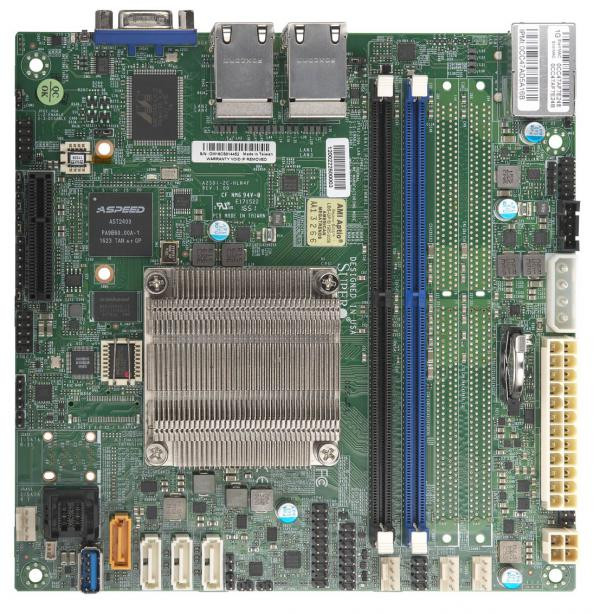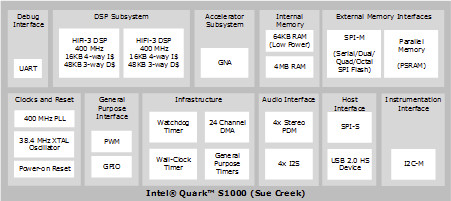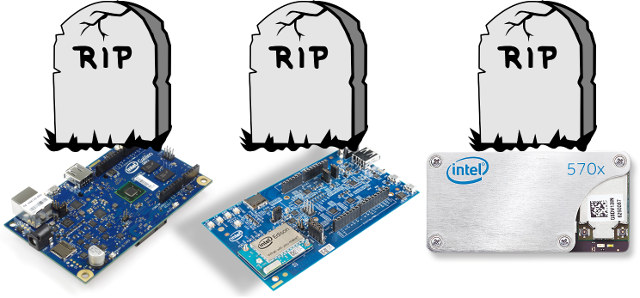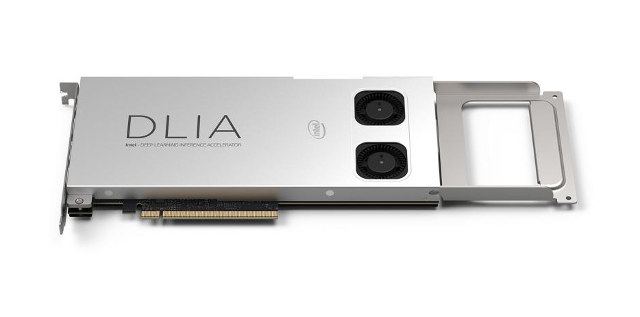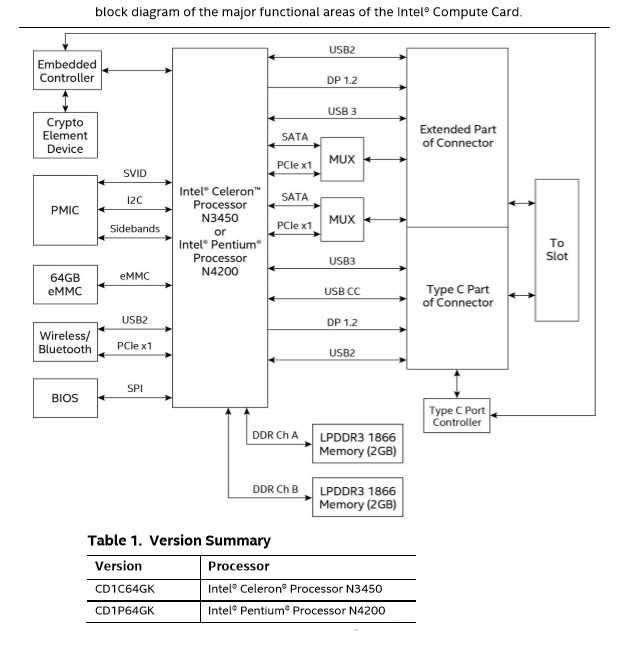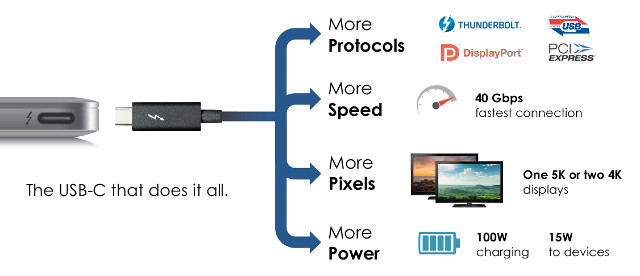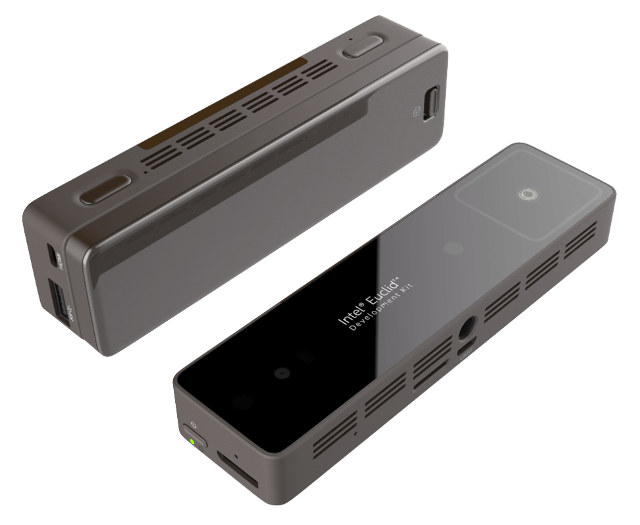Almost exactly one year ago, I wrote about Intel Atom C3000 Series “Denverton” processor based on the same Goldmont architecture used in Apollo Lake processor, and used in an early GIGABYTE MA10-ST0 server motherboard prototype. The latter is not out yet, but according to a YouTube video, the 16-core motherboard should be launched in H2 2017. In the meantime, Supermicro also made their own Denverton motherboard based on a lower-end Atom C3338 dual core processor. Supermicro A2SDi-2C-HLN4F board specifications: Processor – Intel Atom C3338 dual core Denverton processor @ 1.50 / 2.20 GHz with 4 MB cache; 9W TDP System Memory Up to 64GB Register DIMM RDIMM and DDR4-1866MHz Up to 32GB Unbuffered ECC/non-ECC UDIMM, DDR4-1866MHz, in 2 DIMM slots Storage – 4x SATA 3 ports, but up to 8x SATA 3 (6 Gbps) ports are configurable; N.B.: total combined PCI-E lanes and SATA ports is up to 8 Connectivity […]
Intel Quark S1000 “Sue Creek” Processor to Support On-Chip Speech Recognition
Intel may have announced plans to discontinue several of their IoT boards, but based on some documents I received, the company has not given up on the Quark family, although they may have given up on the Intel architecture for low power microprocessor, as Intel Quark S1000 – codenamed “Sue Creek” – will feature two Tensilica LX6 cores (yes, just like ESP32), and is designed to handle speech recognition at the edge (e.g. locally), so some of your voice commands should still work when Internet is down. Intel Quark S1000 key features and specifications: Digital Signal Processors Dual Tensilica LX6 cores @ 400 MHz with HiFi3 DSP Single precision scalar floating-point instructions 16KB 4-way I$; 48KB 4-way D$ Up to 2400 DMIPS, 3.2 GMACS (16×16), 800 MFLOPS of Compute Speech Accelerators A GMM (Gaussian Mixture Model) and neural network accelerator Low power keyboard and limited vocabulary recognition Up to 9.6 […]
Intel Issues End-of-Life Notices for Galileo / Galileo 2, Edison and Joule Boards & Modules
While I’m not sure many of my readers are using them, Intel introduced several IoT development kits and modules over the years, with products like Intel Galileo, followed by Galileo 2, Edison module development board all based on Quark processors, and more recently Intel Joule modules powered by Intel Atom T550x / T570x processors. The three boards / modules and corresponding modules will soon be no more, as Intel issues three end-of-life (EOL) notices for: Intel Galileo Board, and Intel Galileo Gen2 Board Products – PDF Select Intel Edison Compute Module, Intel Edison Breakout Board, Intel Edison Kit for Arduino, and Intel Edison Breakout Board Kit Products – PDF Intel Joule 570x Compute Module, Intel Joule 550x Compute Module, Intel Joule 570x Developer Kit and, Intel Joule 550x Developer Kit Products – PDF All three follow the same “forecasted key milestones”: June 16, 2017 – Product Discontinuance Program Support Begins […]
Intel DLIA is a PCIe Card Powered by Aria 10 FPGA for Deep Learning Applications
Intel has just launched their DLIA (Deep Learning Inference Accelerator) PCIe card powered by Intel Aria 10 FPGA, aiming at accelerating CNN (convolutional neural network) workloads such as image recognition and more, and lowering power consumption. Some of Intel DLIA hardware specifications: FPGA – Intel (previously Altera) Aria 10 FPGA @ 275 MHz delivering up to 1.5 TFLOPS System Memory – 2 banks 4G 64-bit DDR4 PCIe – Gen3 x16 host interface; x8 electrical; x16 power & mechanical Form Factor – Full-length, full-height, single wide PCIe card Operating Temperature – 0 to 85 °C TDP – 50-75Watts hence the two cooling fans The card is supported in CentOS 7.2, and relies on Intel Caffe framework, Math Kernel library for Deep Neural Networks (MKL-DNN), and works with various network topologies (AlexNet, GoogleNet, CaffeNet, LeNet, VGG-16, SqueezeNet…). The FPGA is pre-programmed with Intel Deep Learning Accelerator IP (DLA IP). Intel DLIA can […]
Intel Compute Card Apollo Lake and Kaby Lake SKUs, Block Diagrams, and Specifications
Intel Compute cards are the latest ultra-thin CPU cards introduced by Intel at the beginning of the year, with a concept similar to EOMA68 CPU cards, that it to allow CPU card upgrades or replacements, and interoperability across compatible devices such as smart kiosks, IoT gateways, and so on. But at the time, Intel did not reveal that many details about the different cards, although we know NexDock is working on laptop dock compatible with Intel Compute Cards. But I’ve recently received some block diagrams for Apollo Lake Pentium/Celeron, and Kaby Lake Core M/Core i5 compute cards.There will two SKUs for Apollo Lake compute cards sharing the same specifications, except for the processor: SoC CD1C64GK SKU – Intel Celeron N3450 quad core processor @ 1.1 / 2.2 GHz (base/turbo) with 12EU Intel HD Graphics Gen9; 7.5W TDP CD1P64GK SKU – Intel Pentium N4200 quad core processor @ 1.1 / 2.5 GHz […]
Intel To Make Thunderbolt 3 Royalty-free, Release Specifications
Intel Thunderbolt 3 is a single port connect that supports multiple standards (Thunderbolt, USB 3.1, DisplayPort, PCIe), leverages USB-C connector, and offers up to 40 Gbps throughput. So far, it’s mostly found in higher end computers and laptops, but Intel has now announced plans to make it royalty-free, and “release the specifications to the industry” (so maybe not completely free/public) in order to increase adoption of the standard. Thunderbolt-3 main features: Thunderbolt, USB, DisplayPort, and power on USB-C USB-C connector and cables (small, reversible) 40 Gbps Thunderbolt 3 – double the speed of Thunderbolt 2 Bi-directional, dual-protocol (PCI Express and DisplayPort) 4 lanes of PCI Express Gen 3 8 lanes of DisplayPort 1.2 (HBR2 and MST) Supports two 4K displays (4096 x 2160 30bpp @ 60 Hz) USB 3.1 (10 Gbps) – compatible with existing USB devices and cables DisplayPort 1.2 – compatible with existing DisplayPort displays, devices, and cables […]
ARM Chromebooks Run Android Apps Better, Exhibit Longer Battery Life than Intel Chromebooks (Study)
Google has been working on supporting Android apps and the Play Store on Chromebooks, which are normally sold with either ARM or Intel processors. So the ability to run Android apps well is one of the things to consider before purchasing a Chromebook. Shrout Research has published a paper entitled “Chromebook Platform Choice Important for Android App Performance” comparing an Acer Chromebook R13 with a Mediatek MT8173C ARM Cortex A72/A53 processor to Acer Chromebook R11 with an Intel Celeron N3060. The Intel Chromebook has a smaller resolution so this could be an advantage, so less resources are needed to update the display. However, the ARM processor is significantly more powerful than the Intel one according to GeekBench results, and Chromebook R13 is sold for $399 on Amazon US, while Chromebook R11 goes for $299 (and lower during promotions). So it’s not a perfect comparison, but it should give an idea […]
$399 Intel Euclid Robotics Devkit Runs Ubuntu & ROS on Intel Atom x7-Z8700 Processor
We’ve seen many mini PC based on Intel Atom x5/x7 “Cherry Trail” processor in the last year, but Intel has also integrated their low power processor into hardware aimed at robotics, such as Intel RealSense development kit based on Atom x5 UP Board and RealSense R200 depth camera. The company has now launched its one-in-all Intel Euclid development kit combining Atom X7-Z8700 processor with a RealSense camera in a single enclosure. Intel Euclid specifications: SoC – Intel Atom x7-Z8700 Cherry Trail quad core processor @ up to 2.4GHz with Intel HD Graphics Gen 8 System Memory – 4GB LPDDR3-1600 Storage – 32GB eMMC 5.0 flash, Micro SD slot up to 128GB Video Output – micro HDMI port up to 4K @ 30 Hz Audio – 2x I2S interfaces, 1W mono speaker, 3x DMIC with noise cancellation Camera – Intel RealSense ZR300 camera RGB camera – 2MP up to 1080p@30fps, 16:9 […]


